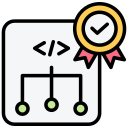Top Low‑Code Platforms for New Developers
Chosen theme: Top Low‑Code Platforms for New Developers. If you’re just starting to build apps, this home base is your friendly guide to pick tools, practice essentials, and ship something real. Join the conversation, share your wins, and subscribe for weekly walkthroughs.
What Makes a Low‑Code Platform Great for Beginners
Drag‑and‑drop editors shorten the distance between idea and result, letting you learn by assembling components and instantly previewing changes. Good platforms surface helpful errors and hints, so you pick up core development concepts while building something you actually need.
What Makes a Low‑Code Platform Great for Beginners
Beginner‑friendly platforms offer templates for common apps, guided lessons, and safe sandboxes with sample data. These reduce early decision fatigue, encourage experimentation without fear, and help you connect the dots between data, logic, and interface before tackling custom features.
What Makes a Low‑Code Platform Great for Beginners
For new developers, built‑in auth, role permissions, and environment separation are lifesavers. Look for audit logs, versioning, and sensible defaults that keep data safe while you focus on learning. Want a starter security checklist for low‑code? Comment, and we’ll send it.
Quick Comparisons: Bubble, Adalo, Glide, and AppSheet
Web Apps with Bubble: Power Versus Complexity
Bubble offers deep database control, a robust workflow engine, and a large plugin ecosystem. New developers love the flexibility, but the learning curve can surprise. Start with a simple feature set, iterate weekly, and share your first build screenshots with our community.

Enterprise Options for Ambitious Starters: Power Apps, OutSystems, Mendix
Power Apps integrates with Microsoft 365, Dataverse, and hundreds of connectors, making it approachable for teams already on Azure. For new developers, tenant support and prebuilt connectors reduce friction. Share your first Power Apps canvas app story to help others choose confidently.
A Beginner’s Story: Building a Weekend App That Actually Worked
Alex needed a simple inventory tracker for a local food pantry by Monday. After browsing options, Bubble felt flexible but heavy. Glide’s spreadsheet base promised speed. Alex picked Glide to prioritize momentum, planning to revisit complex logic after the first successful pilot.
Key Skills New Developers Should Practice on Low‑Code
Design clean tables, relationships, and unique identifiers before styling screens. Even in low‑code, structure prevents chaos. Normalize where needed, denormalize prudently for speed, and document fields. Post your schema sketch; we’ll give feedback and share patterns for common beginner apps.
Key Skills New Developers Should Practice on Low‑Code
Map user journeys, triggers, and error paths. Handle empty states, retries, and permissions early. Write out scenarios on paper before building. Then implement step by step, testing with real data. Comment your trick for catching edge cases before they surprise your users.
Key Skills New Developers Should Practice on Low‑Code
Use familiar navigation, clear empty states, and accessible color contrast. Keep forms short, validate inline, and respect mobile touch targets. Consistency makes apps feel trustworthy. Share a screenshot of your favorite low‑code screen; we’ll annotate improvements in an upcoming post.
Beyond monthly prices, watch record limits, workflow runs, user seats, and API quotas. These shape your architecture and growth plans. Start small, measure usage, and forecast. Tell us which limits surprised you first; we’ll compile a living guide for new developers.

